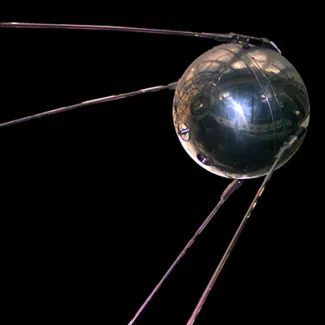

In 1957, the Soviet Union launched Sputnik 1, the first artificial satellite. As the United States sought to catch up, and the space race took off, scientific developments pioneered a wide range of uses for satellite technology. Since the launch of the first communications satellite in 1962, satellites have been an integral part of global communications. That year, the first transatlantic broadcast of live television entertained an audience of tens of millions. In North America, viewers saw, among other highlights, the Big Ben, the Louvre, and Sicilian fishermen at work; in Europe, viewers were treated to sights of an American baseball game, the Statue of Liberty, and a press conference by President John F. Kennedy. Today, more than 2,500 satellites orbit the earth to track weather, monitor military movements, give users accurate directions through the Global Positioning System (GPS), and more.